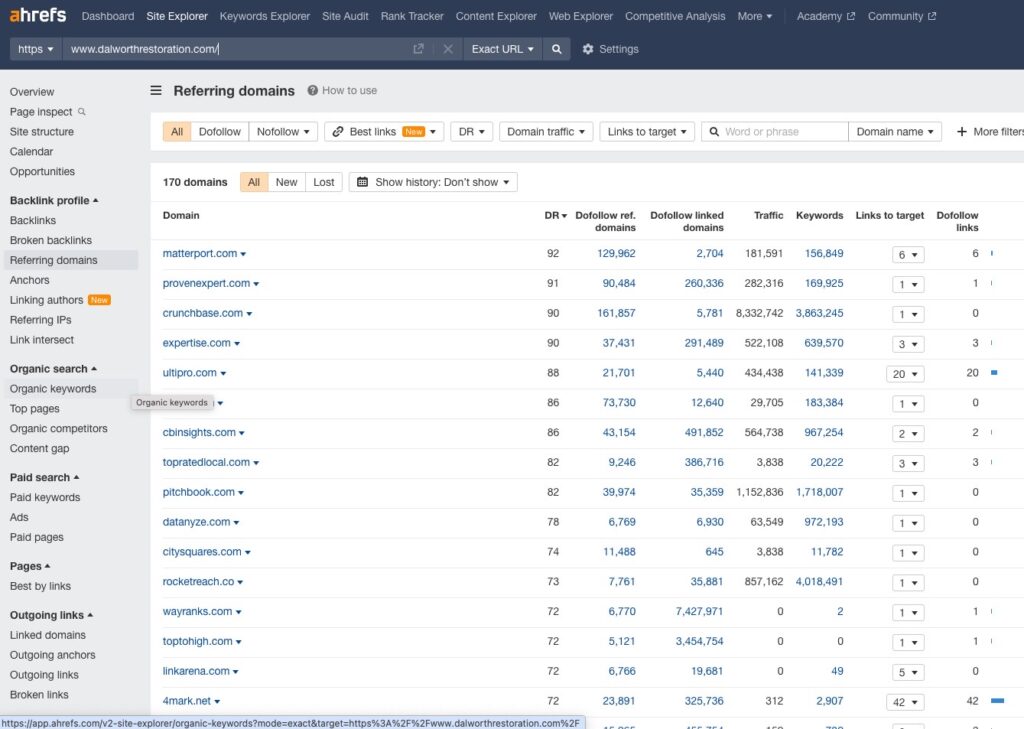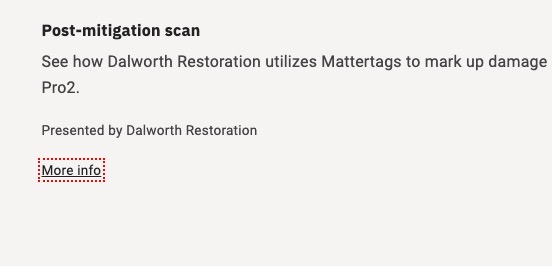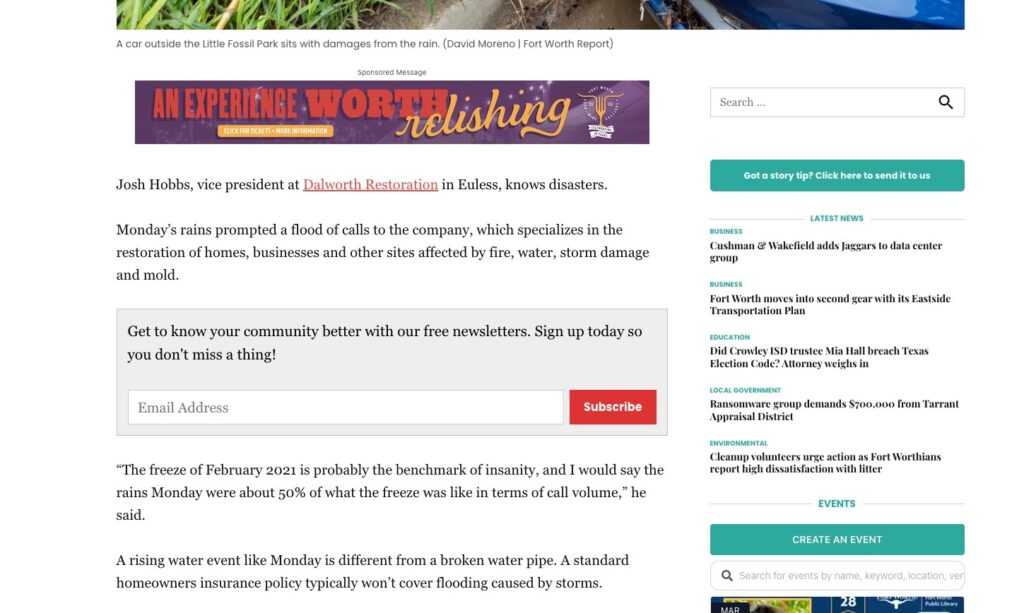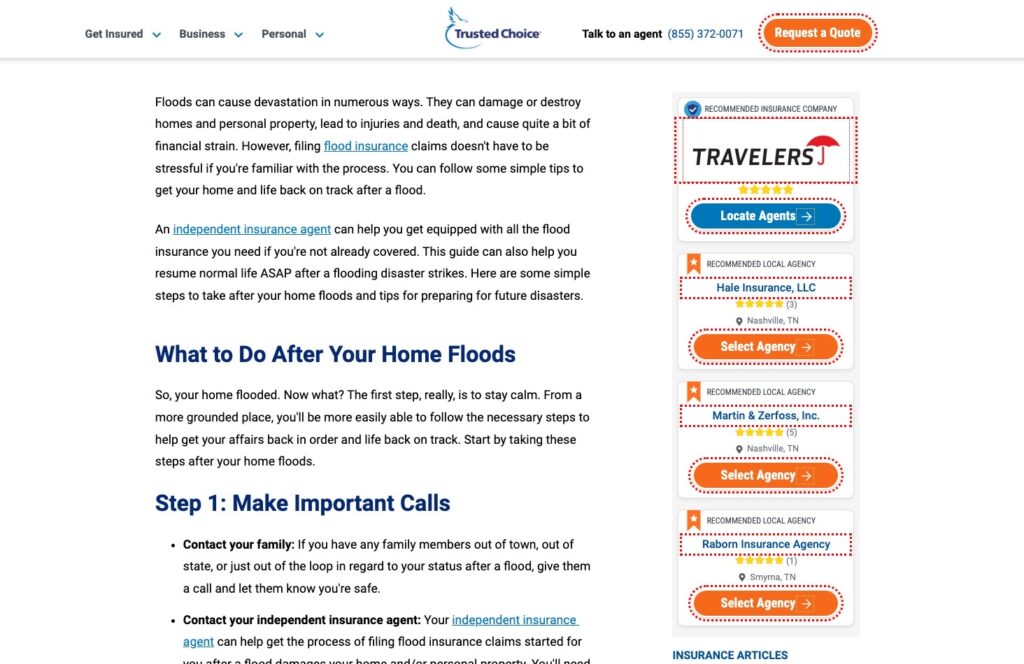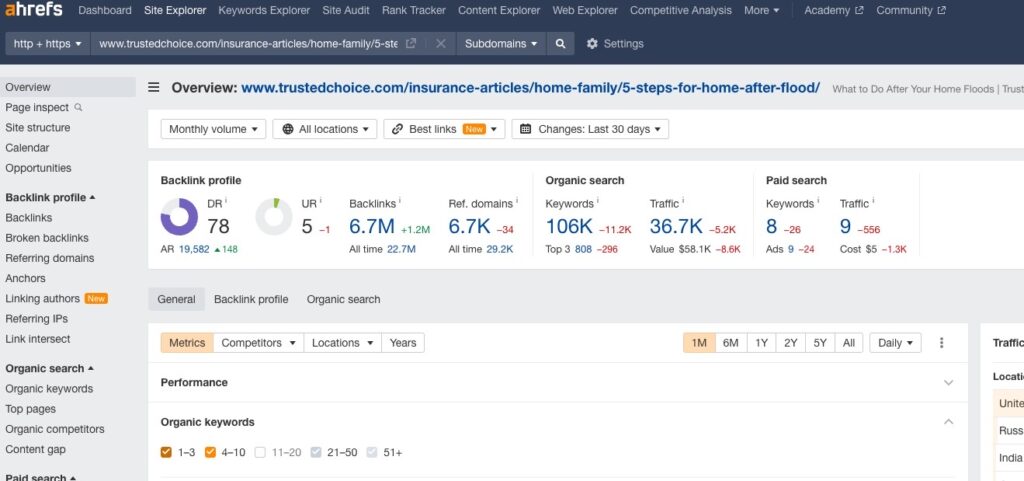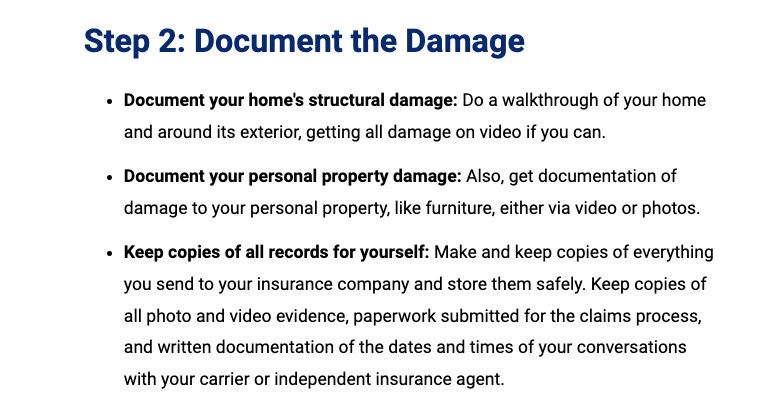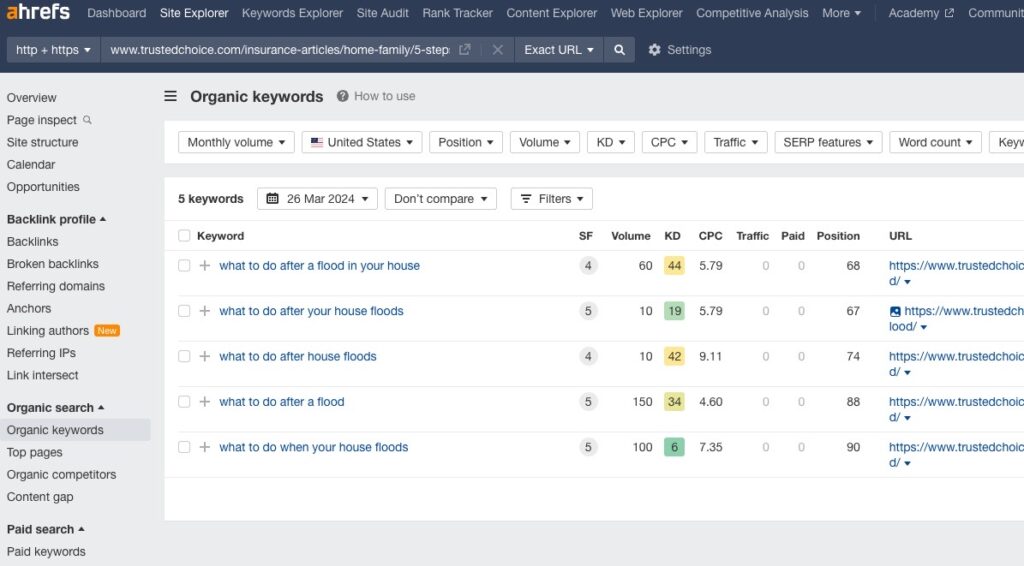Relevant Backlinks
Whether employing natural link-building tactics to attract links or buying links in bulk, ensuring that you get niche-relevant links will provide the best results and most significant ROI from your campaign.
Relevant backlinks set your site apart from competitors with similar content because they act as “votes of confidence” from related sites.
While our emphasis today is on link relevancy, that doesn’t mean it supersedes other checks like the traffic or link growth curve—it is in addition to your other link screening criteria.
At Stellar SEO, we use 25+ checks to screen each link we build and have built more than 25,000 links over the past decade.
Enough about us, though. Let’s jump into understanding link relevancy.
Understanding The Link Building Landscape in 2024
Google has been on the warpath lately, rolling out relevancy, helpful content, and link building updates.
While these updates have led to sorted results and, in some cases, made the search results worse, their underlying goal is clear—to display authentic content that accurately answers the searcher’s intent.
Since you and your competitors have complete control over the quality of your on-page content, search engines like Google use link building as the tiebreaker.
The quality, volume, and relevancy of your links will all impact your performance when it becomes a battle of the backlinks.
Today, we’ll define relevant links and explore why they are essential, how to gauge relevancy, and how to secure highly relevant links.
What Are Relevant Backlinks?
Relevant links come from sites that are either topically or geographically relevant.
Focusing on link relevance will allow you to enjoy the many benefits while avoiding common link building pitfalls.
Benefits of Relevancy-Focused Link Building
Improved Search Engine Rankings
They boost your visibility, ensuring your website shines as a top contender when potential clients search for solutions. This heightened visibility is a cornerstone of digital success, making your site the go-to place for solutions within your niche.
Targeted Traffic That Converts
Backlinks from pertinent sites are direct pathways for high-intent visitors to find you. This isn’t just about increasing footfall but about attracting visitors who are already interested in your offer, significantly enhancing the likelihood of conversion.
Authority and Trust in Your Niche
Each relevant backlink is a nod of approval from authoritative sources, bolstering your site’s credibility.
For potential clients, these endorsements build trust in your expertise and services, distinguishing you as a leader in your field.
Long-Term SEO Value
The beauty of relevant backlinks lies in their enduring contribution to your site’s SEO health.
They provide a sustainable boost to your online visibility, ensuring that potential clients can discover your services not just momentarily but for years down the line. This ongoing visibility is pivotal in maintaining a competitive edge in the ever-evolving digital landscape.
Enhanced User Experience
Relevant backlinks ensure the journey from click to content is seamless and satisfying, aligning perfectly with the searcher’s intent. For potential clients, this relevance enhances their interaction with your site, positively influencing their decision-making process.
A stellar user experience creates immediate engagement and fosters long-term loyalty.
Relevant backlinks are more than SEO enhancers; they are the keystones of building a digital presence that attracts, engages, and retains potential clients.
Here is what Google says about link relevance and its influence on search engine rankings.
Understanding Google’s Algorithmic Preferences
In evaluating the concept of a relevant backlink, it’s essential to recognize that its significance extends beyond merely linking two digital entities.
According to Google’s patent (US8407231B2), evaluating a backlink’s relevance involves an analysis deeper than topical similarity. It considers the link’s historical context and its genuine contribution to the quality and authenticity of content.
Google’s approach to assessing link relevance is dynamic. It considers how the presence and prominence of links to a document change over time, reflecting the document’s current relevance or diminishing importance.
Links from domains with a track record of linking to relevant, high-quality content are deemed more valuable. Google’s algorithm aims to identify links that genuinely contribute to the richness and usefulness of the web’s content, distinguishing them from those created for manipulative purposes.
Google views a relevant backlink as one that seamlessly fits within the content’s context, enhances the user’s understanding, and originates from credible sources with a history of contributing positively to the web.
This approach ensures that search rankings reflect authority and relevance, directing users to high-quality and reliable content.
As a non-seo professional screening for relevant sites, you would direct your focus to geographically or topically relevant sites.
An agency or link building professional should consider a potential site’s incoming links to gauge relevancy and quality.
Geographically Relevant Links
For businesses serving a local market, geographical relevancy is a strong signal that will help boost your visibility in localized organic and map pack rankings.
Geographically relevant links are simply those in the same or nearby locations. Topical relevancy means that the website you are getting a link from has an audience similar to yours.
If you have a restoration company in Dallas, TX, getting a link from a bakery, wheel repair shop, and an eye doctor in Dallas would provide you with geographically relevant links.
Topically Relevant Links
Topical relevancy is your gold standard if you are not serving one or more specific locations, as geographically relevant links would not have the same positive impact fr organic SEO as they do for local SEO.
Stick with our above example; topically relevant links would come from plumbers, roofers, restoration news sites, home improvement sites, insurance sites, real estate sites, and others with relevant content and logical audience overlap.
You may be wondering what a real estate site has to do with a restoration company.
Did you know that finding mold during a home inspection is extremely common in many states and requires the seller to contact a restoration company for mold mitigation before closing?
As you can see, relevancy goes beyond the surface and requires you to think more deeply about the topic.
While every link would be 100% relevant in a perfect world, that isn’t the case—regardless of how you acquire them.
Varying Degrees of Link Relevance
The first thing you must accept is that link relevance isn’t pass or fail; it’s on a sliding scale.
Once you have digested that, the next thing to realize is that no links are perfect, but thankfully, SEO is a competitive sport, so they don’t have to be.
This is where the A.R.T. of link building comes into play.
Authority, relevancy, and trustworthiness are critical components of a good link.
Some links will have all three, while others may only provide one or two elements.
For example, if you get coverage on a media site like Forbes, it will have a lot of trust and authority, but since the site is multi-topic, the relevancy of your link would be lower.
On the other hand, if you are a restoration company and got a link from candrmagazine.com, the relevancy will be much higher, even though it has less authority.
For classification, you can rate links as an A,B,C, or F. You can employ this method when reviewing your current link profile or looking at potential sites to acquire a link.
How Can You Determine Link Relevance?
Pursuing relevant backlinks is akin to finding the right ingredients for a gourmet meal.
Each link adds a unique flavor, contributing to the overall success of your online presence.
Here’s how to rate each link based on the A.R.T. of link building: Authority, Relevance, and Trustworthiness.
A: The Gold Standard
Authority: High domain authority that commands respect in the digital realm.
Relevancy: A perfect match for your niche, as if the linking site and your own were long-lost twins. This site would share the same main topic or audience as you.
Trustworthiness: Recognized for its credibility and integrity, this site epitomizes digital reliability.
Links that achieve this trifecta are the crème de la crème of backlinks. Imagine a link from an industry leader directly in your field; it not only brings in a high authority score but is also topically aligned with your content and from a site known for its stringent quality standards.
B: The Solid Contributor
Authority: Respectable but not top-tier, this site still holds sway in its niche.
Relevancy: The site’s focus aligns well with your own, though not perfectly. It’s like a neighbor in the same subdivision but a few streets over. This could be a site with multiple categories, but all of them are focused on a general theme that matches the concept of your site.
Trustworthiness: It is known for good practices, but not the first name that comes to mind in its industry.
These are your dependable workhorses. They might not shine as brightly as your A-listers, but they bolster your site’s SEO. A B-rated link could come from a well-regarded niche blog with a loyal following relevant to your audience.
C: The Generalist with Flair
Authority: Moderate to low. This site may be a minor player in the digital ecosystem.
Relevance: This site would have a dedicated category relevant to you but may also cover unrelated categories from various niches.
Trustworthiness: This site is rising, and its reputation is steadily building.
C-rated links are helpful and natural but not blockbusters. These links often come from emerging sites growing their presence in a specific corner of your industry.
F: The Risky Bet
Authority: Low or artificially inflated. These sites offer little in the way of genuine influence.
Relevancy: A mismatch for your content, offering little to no synergy with your site’s focus.
Trustworthiness: Questionable practices or a lack of established credibility make these sites digital wild cards.
F-rated links are the ones to avoid. They can do more harm than good, potentially dragging down your site’s reputation alongside their own.
These are often the links that come from disreputable sources or have no logical connection to your niche.
Crafting Your Backlink Portfolio
In the competitive sport of SEO, not all links must be A-rated to be valuable. A balanced backlink portfolio, much like a well-rounded wine cellar, contains a variety of vintages.
In fact, if you review link profiles from even the largest sites in any niche, you will find that they have more B and C links than A’s.
B and C links play essential roles, filling the ranks and supporting your site in broader searches or specific niches – and this diversity keeps your backlink profile natural.
However, the key is to avoid F-rated links like a bad vintage, as they can taint your site’s profile.
Remember, the A.R.T. of link building isn’t just about accumulating links; it’s about curating a collection that enhances your site’s authority, relevance, and trustworthiness in the eyes of both users and search engines.
Each link is a brushstroke in the larger picture of your online presence, contributing to a masterpiece of digital marketing strategy.
Monitoring and adjusting your outreach strategy accordingly will allow you to craft a link profile that combines the trifecta into a powerful moat, defending your rankings and safeguarding against Google updates.
Now, as you know, knowing what to do is only half the battle; putting theory into practice is where things can get tricky.
Not to worry, though, here are some methods you can use to find relevant link opportunities
How To Find Relevant Link Opportunities
Link building can encompass a diverse set of tactics, from guest posting on relevant websites to using private blog networks (which is not recommended).
When you set out on your journey, you should do so with an open mind and willingness to adapt to the competitive landscape.
Looking To Competitor Link Profiles To Find Relevant Backlinks
You may need multiple link-building tactics to replicate their best links when reverse engineering your top-ranking competitors.
Do they have links from local news sites? A PR campaign is your best bet. Did they pick up a lot of placements through guest posts? You can follow suit to do the same.
To get started with this, make a list of your top few competitors.
These could be companies you know as competitors, but it is usually more effective to find the top sites ranking your the primary keywords of the page (s) you are promoting.
Once you have the list, open your link-building tool and work through it.
Link Building Tools Making Find Competitor Links Pretty Easy
Use the above rating system and your favorite link-building tool to extract suitable link opportunities.
Here’s an example using Ahrefs:
Review each placement and determine which tactic was used to secure a link. Some of these will be obvious, such as resource page links, while others will require your best guess and a few tries to get it right.
Using our example above, here is the first link on the list: https://matterport.com/ja/media/3673
If you open this, you can quickly see that they have uploaded and image to Matterport, and the link comes from a mention of the source:
In this case, Matterport is software used with 360-degree cameras to capture before-and-after construction photos or listing photos for real estate, making this link partially relevant.
I would rate this as a C since Matterport is a trusted site, but it is essentially a profile link, and there isn’t much context on the page relevant to the restoration company or its location.
If we skip down the list, here is another example from their link profile:
I would give this one an A rating because it is a media placement on a local news site directly relevant to restoration. The website has plenty of trust and authority, so even though it is “weaker” by authority than Matterport, it is still a better link.
As you can see from the examples above, unraveling your competitor’s link profile will lead you to find a diverse set of relevant and quality-based link opportunities. This next tactic is designed to help you find those A-listers.
Prospecting Hyper-Relevant Pages
One of the best ways to find and secure relevant links is by finding sites and pages that already rank in Google for one or more of your target phrases.
Mastering Google Searches
Google search operators are an efficient and cost-effective strategy. They fine-tune your search queries, making it easier to find websites that offer valuable linking opportunities.
Essential Search Operators Include:
- Intitle:[keyword]: This operator helps you find pages with your target keyword in the title tag, indicating a strong relevance to your service area.
- Intext:[keyword]: Utilize this to discover pages where your specific keyword appears in the main content, suggesting the page’s relevance to your topic.
- Site:[website] [keyword]: A focused search within a particular website for your keyword, helpful in scouting out potential partners or understanding competitors’ backlink landscapes.
Using quotes around keywords ensures your searches are precise, targeting exact match phrases.
Suppose your business specializes in water damage restoration in Dallas.
Initiating a search with intitle:”water damage restoration tips” could predominantly display direct service providers.
However, deeper exploration might reveal an informative blog post on a local news site about preparing homes for Dallas’s rainy season, including a section on water damage prevention and restoration.
This scenario presents an excellent opportunity for your business to contact and propose a link to your services as a local expert.
Following the local Dallas restoration company example, let’s expand the search for backlinks beyond local relevance to encompass a national scope. Imagine you perform a search with intitle:”what to do after your home floods”, aiming to discover authoritative content on a broader scale.
In your search, you will find an article like “What to Do After Your House Floods.”
This piece is relevant, and the site has good metrics, too.
By reaching out to this site with an offer to enrich their content with your expert knowledge or a unique perspective on flood damage restoration, you open the door to securing a valuable backlink.
In this case, they briefly touch on documenting the damage, although it is a critical part of the process.
You could pitch this site a related article that goes deeper into documenting damage, a resource already on your site that details how to do this, or offer to update their post and expand that section.
If you go a step further and check the rankings for this article, you could also show them some relevant keywords they aren’t ranking for.
Offer to revise the content and optimize it for terms like “what to do after a flood,” – which would benefit both of you.
Of course, you can repeat these exercises for hundreds of keywords, which is enough to keep even the most eager of you busy.
To round out our prospecting tips, here are some tactics to land authority links that, while they may be slightly less relevant, will pack a punch when coupled with more relevant opportunities.
Media and PR Outreach Campaigns
Haro & ProfNet
When you hear media or PR, Haro is one of the first sites that comes to mind for many. Other popular sites, like ProfNet, offer a similar platform.
Either way, the goal is to sign up, respond to reporters, and get links. This sounds great in theory, but there are a couple of drawbacks.
- It is heavily saturated, so you will get fewer links per reply on average.
- It is difficult to scale since you are limited to responding to relevant queries as they come in.
- If you lack unique expertise, you will have a harder time getting picked up. For those of you doing it yourself, this can work in your advantage. We worked with a doctor who was slaying it on Haro.
This can be included as a part of your overall link-building strategies, but don’t rely solely upon it.
Media Outreach Campaigns
Unlike Haro, media outreach campaigns mimic traditional outreach in that you find relevant opportunities (journalists in this case) and pitch them on something you think will interest them.
In terms of scalability, you can control the volume of outreach, so it generally produces more links than Haro if you have a solid pitch.
One method we have found to work particularly well for this is to curate data and studies, highlight some conclusions from the data, and then send it out to journalists who commonly cover the topic.
They can use the data you have curated when creating their content, making it easier for them and getting you a mention as the source in the process.
Pay-to-Play Media Placements
Since well before the Internet, cash has been greasing the wheels of news sites and allowing companies to control their narrative. This remains the case when it comes to SEO link building.
Buying high-quality links on relevant sites is scalable and effective. Whether you do this directly or hire an agency, it’s common practice.
However, the other two methods also work if you don’t feel comfortable paying for placements directly.
Building and Executing Your Relevancy-Focused Link Building Strategy
Stellar SEO offers custom link outreach campaigns to fit your unique criteria and business model.
If you are looking for a trusted agency to partner with, here is how we can help.
Link Audits & Consulting
If you have ever opened Google Search Console and found a manual link penalty notice, you know what it feels like to be on the wrong side of search engines.
Fortunately, our team has been doing penalty recoveries and algorithmic filter removal work for over a decade — meaning we have just about seen it all.
Whether you are struggling to develop a new link-building strategy that works as intended, are trying to recover from a significant traffic loss, or just need help getting relevant backlinks, we can help. We can also audit internal links to ensure you’re making the most of what you already have available.
Custom Link Outreach
Getting a relevant link is beneficial.
Combined with a comprehensive link-building plan, it can create explosive growth for your company.
Through our custom outreach link building campaigns, we use a variety of tactics for building relevant links, including
- broken link outreach
- resource link building
- media outreach campaigns
- natural link acquisition strategies
- content research and content marketing
- anchor text analysis and planning
Our experience and diverse use of tactics can help you replicate competitor links, craft a natural and relevant link profile, and put you in the position to dominate your niche.
Blogger Outreach
Sometimes, checking link relevance, screening for low-quality web pages, and even building an extensive enough list of target websites can feel overwhelming, especially if you need a lot of links to catch up.
Our blogger outreach service is designed to build links that search engines like Google will love. We focus on link relevance, natural anchor text usage, and a careful screening process that will allow you to get links that boost search engine rankings at scale without sacrificing quality.
Niche Edits
Niche edit link building is the practice of getting links added to existing content.
Focusing on pages with closely related content, screening the website’s authority & domain rating, and scrutinizing the context in which your link would be placed is an excellent option for building links to your site.




